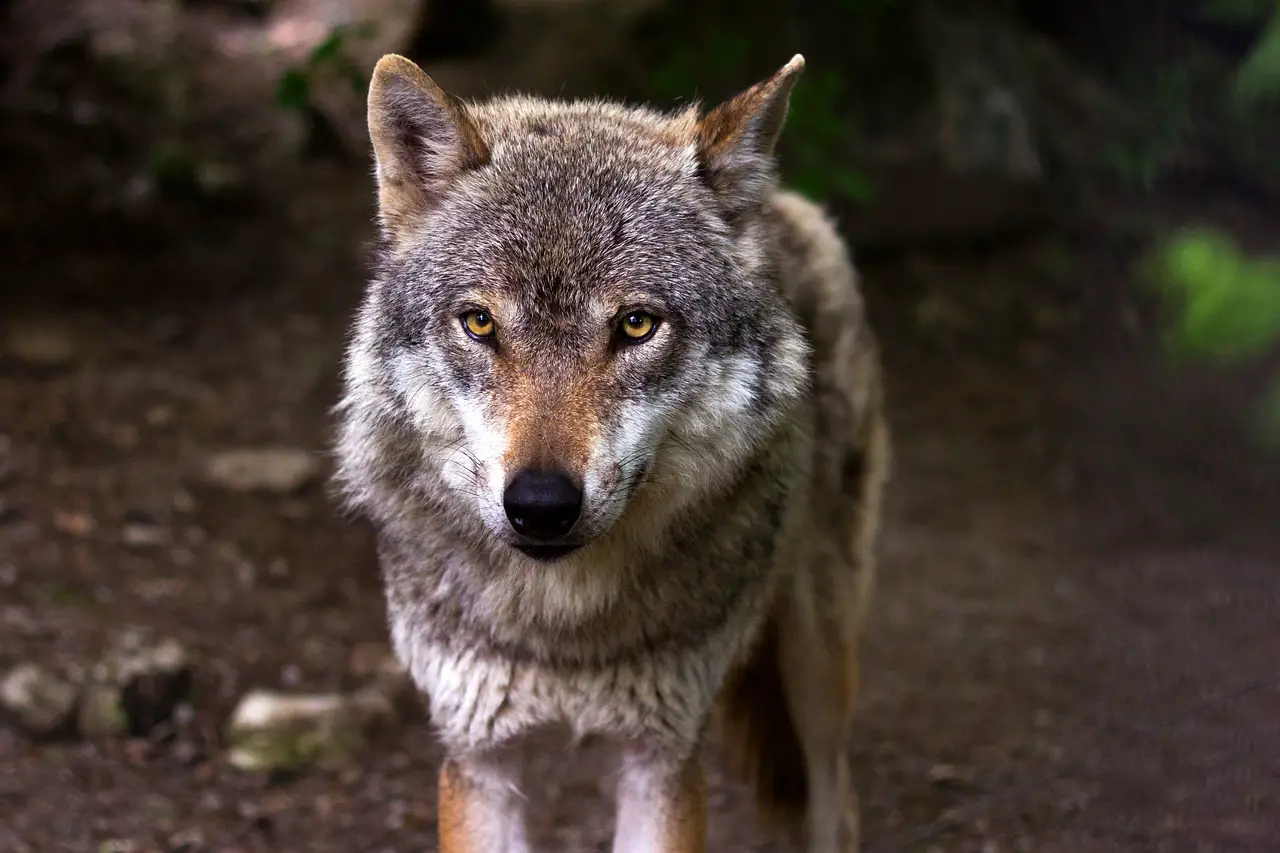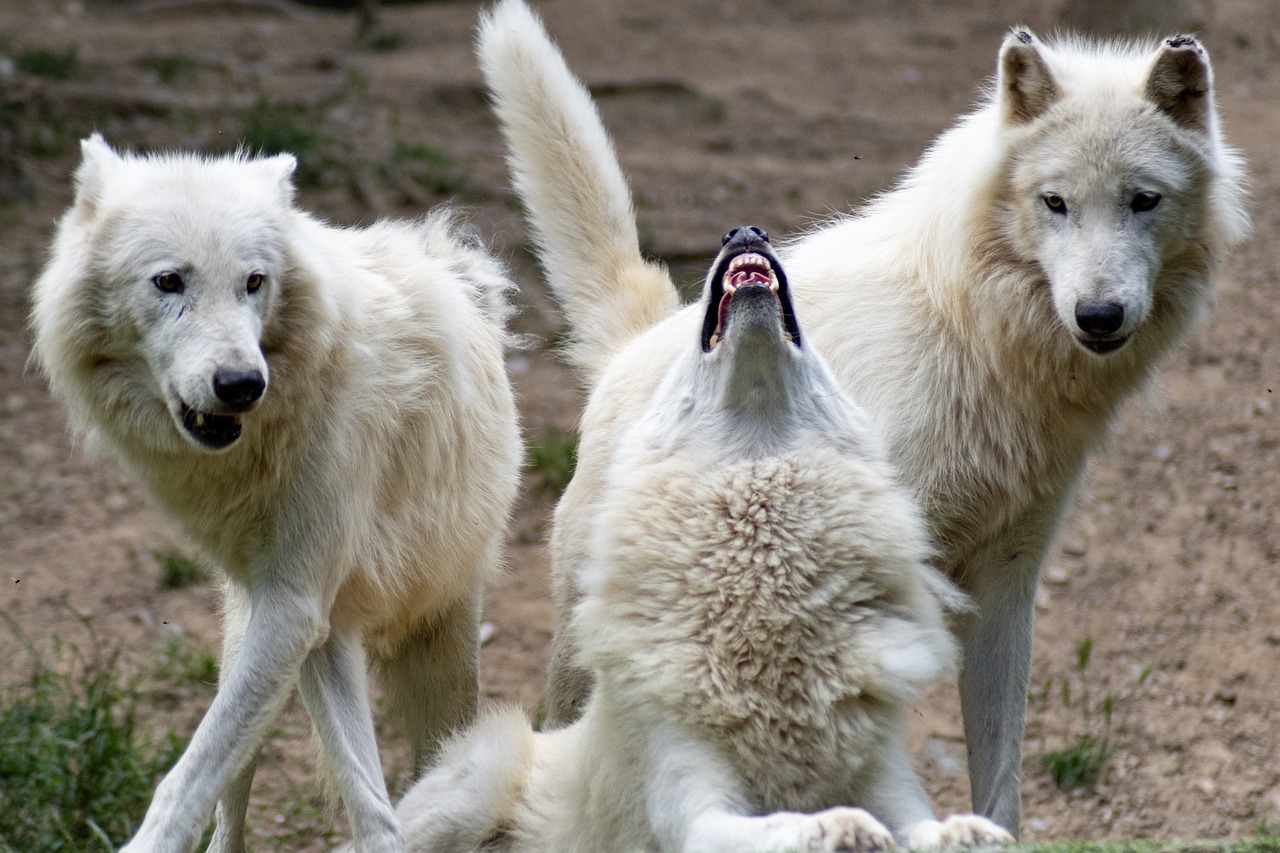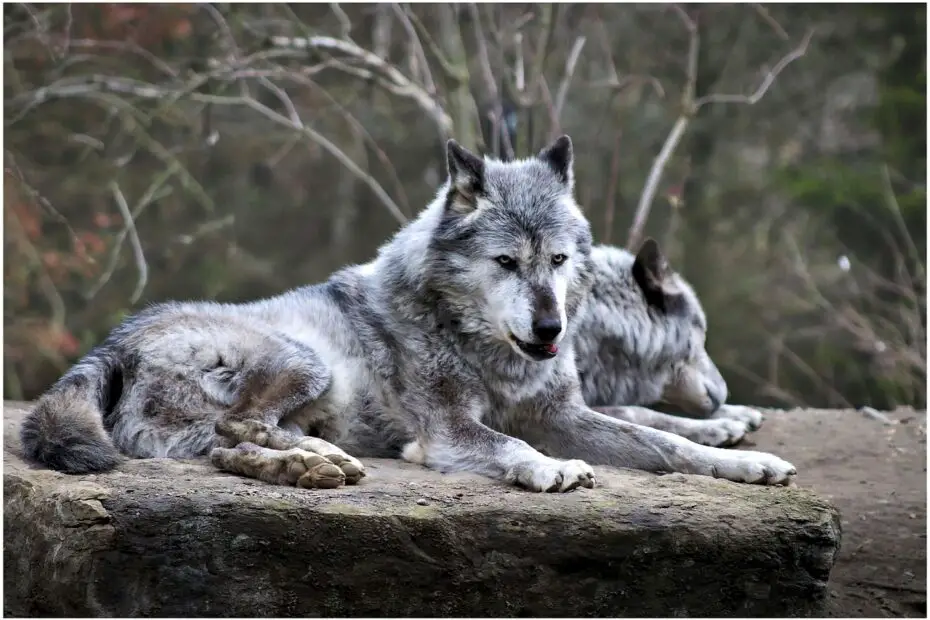Wolves, with their enigmatic presence and captivating howls, have long intrigued humans. Beyond their mesmerizing behavior, another aspect that adds to their allure is their stunning diversity of coat colors. From the classic gray wolf to the rare white and black variations, wolf coat colors offer a fascinating glimpse into the complexity of these canines.
In this article, we will delve into the diverse world of wolf colors, exploring their genetic basis, adaptability, and cultural significance.
You may also want to know if a husky dog is related to a wolf.
The Gray Wolf: A Basis for Comparison
The quintessential image of a wolf often features the elegant gray coat. Gray wolves are the most widespread and common wolf species, serving as a basis for understanding the coat colors found in other populations.

The Fascinating World of Fur Pigmentation
Coat colors in wolves are influenced by a combination of genetic and environmental factors. Understanding the mechanisms behind fur pigmentation provides insights into the striking variations observed in wolf populations.
Common Wolf Coat Colors
In addition to the classic gray coat, wolves exhibit a range of other common colors, including black and white. Each color variation carries its own set of advantages and adaptations for survival in different environments.
Melanism in Wolves
Melanism, a genetic mutation, results in the appearance of black wolves. These majestic creatures stand out with their dark fur, often found in certain regions due to specific genetic factors.
Albinism and White Wolves
On the opposite end of the spectrum, white wolves, sometimes referred to as “spirit wolves,” are rare due to albinism. These ethereal beings have captured human imagination for centuries.
The Mystique of Red and Brown Wolves
Some wolf populations exhibit coat colors in reddish and brown hues. These variations, although less common, offer unique insights into the diversity of wolf genetics.
Mixed Wolf Colors and Patterns
Wolves with mixed colors and distinctive patterns add to the intrigue of their appearance. These variations may offer camouflage advantages or signify specific genetic traits.
Camouflage and Concealment
Coat colors play a crucial role in the camouflage and concealment of wolves during hunting. Their ability to blend into their natural environment enhances their chances of success in capturing prey.

Cultural Significance and Symbolism
Throughout history, wolves and their coat colors have held significant cultural symbolism. They have been revered or feared, associated with various beliefs, and featured prominently in folklore and mythology.
Human Impact and Perceptions
Human activities have had both positive and negative impacts on wolf populations and their coat colors. Conservation efforts are vital to preserving these majestic creatures and their unique traits.
Conservation Challenges
Protecting wolf populations poses various challenges, including maintaining genetic diversity and ensuring sustainable habitats for these apex predators.
Wolf Colors and Hybridization
Hybridization with domestic dogs poses a threat to the genetic purity and coat colors of wild wolf populations. The delicate balance between conserving wolves and addressing hybridization is a complex challenge.
Wolves in Different Regions
Wolf coat colors may vary in different regions around the world. Factors such as climate and geography can influence these variations.
Conclusion
The captivating world of wolf coat colors offers a glimpse into the intricate web of nature’s diversity. From the classic gray to the rarest black or white variations, each coat color signifies adaptability, evolution, and cultural symbolism. Understanding and preserving these mesmerizing creatures are essential for maintaining the balance of ecosystems and the preservation of this iconic species.
FAQs:
1. Do all wolves have gray coats?
- No, while gray is a common coat color, wolves exhibit a range of colors, including black, white, red, and brown.
2. Are white wolves albinos?
- Yes, white wolves result from albinism, a genetic condition that causes lack of pigmentation in the fur.
3. Are black wolves a separate species?
- No, black wolves are not a separate species. They are a color variation found in some wolf populations.
4. What is the cultural significance of wolf coat colors?
- Wolf coat colors have been associated with various cultural beliefs and symbolism, often depicting traits such as strength, cunning, and spirituality.
5. How can we protect wolf populations and their coat colors?
- Protecting wolf habitats, addressing human-wildlife conflicts, and implementing conservation programs are essential for preserving wolf populations and their coat color diversity.
